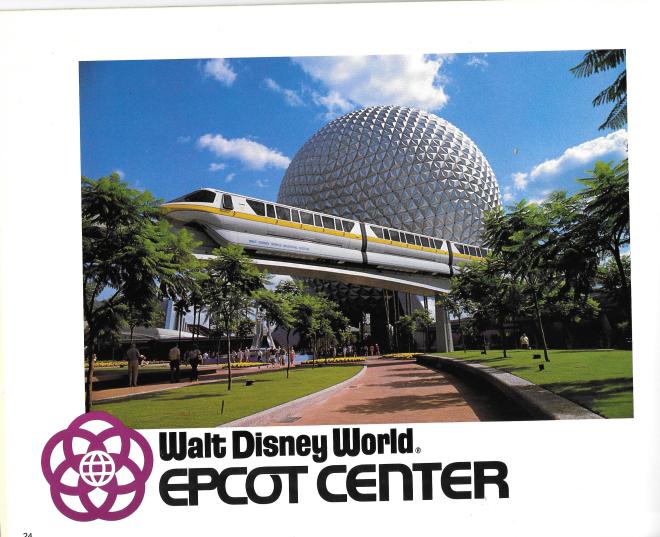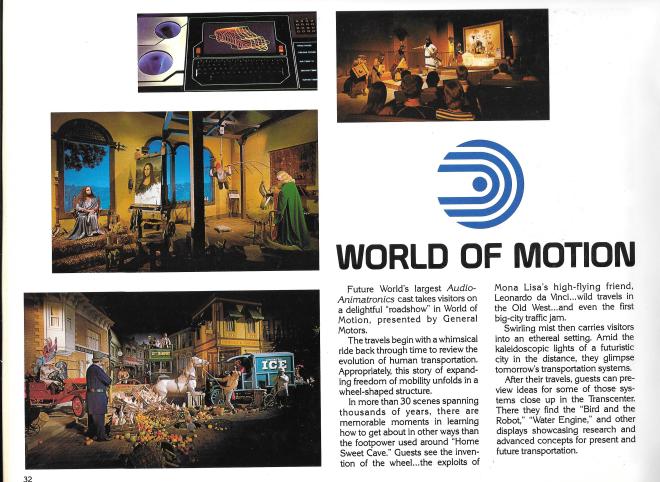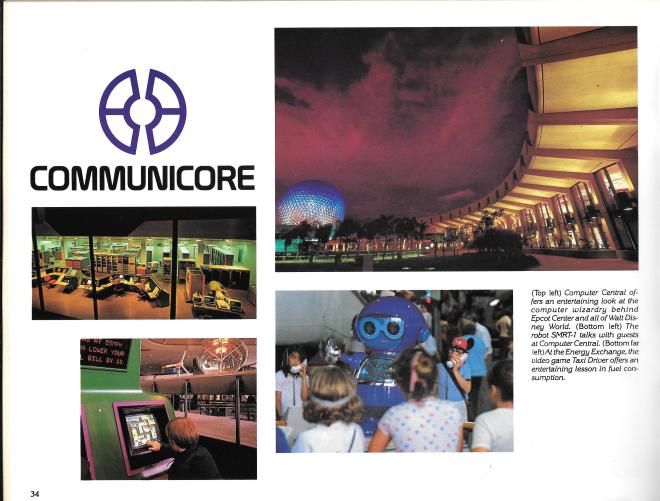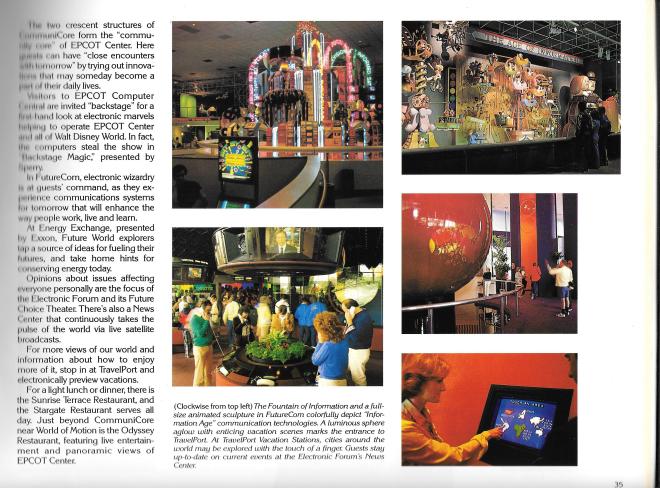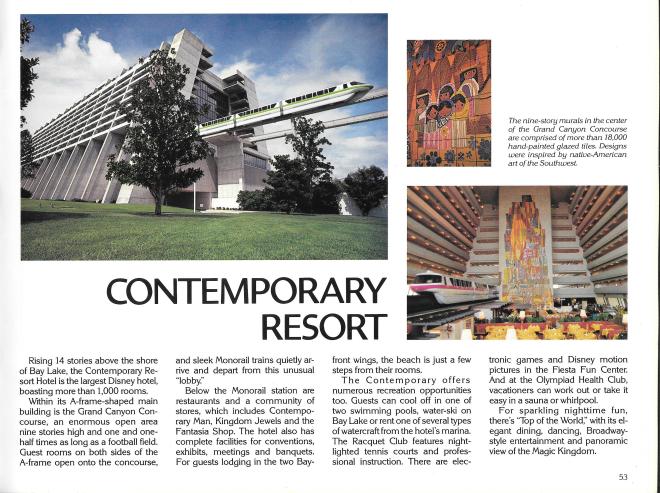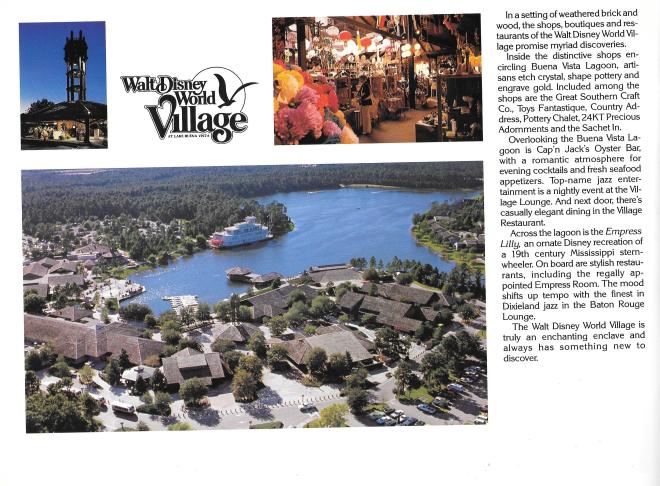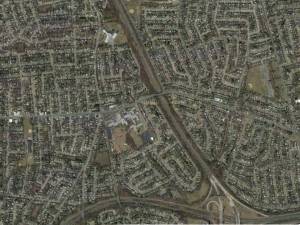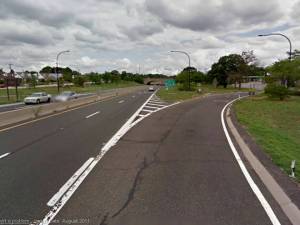It’s episode 150 of the show, and for this episode, I revisit my series of episodes about America: its history, its people, and its culture. After talking about my interest in books about American “stories” (and the many books I’ve read over the years), I return to Peter Jenkins’ A Walk Across America by looking at its newly published “sequels”: Barbara Jenkins’ book So Long As It’s Wild and Jedediah Jenkins’ book Mother, Nature.
travel
In Country: Marvel Comics’ “The ‘Nam” — Episode 99
 One episode and a wake-up is left!
One episode and a wake-up is left!
In the penultimate episode of In Country, I take time out from comics, movies, and the Vietnam War to talk about the war’s aftermath and Vietnam itself. The episode begins with the history of the Vietnam Veterans Memorial in Washington, D.C. along with descriptions of two other Vietnam War memorials that I’ve been to on Long Island and in Charlottesville. I then talk about the postwar history of Vietnam and U.S. relations with Vietnam as well as look at the country in the present day via season 8, episode 1 of Anthony Bourdain: Parts Unknown. Plus, listener feedback!
You can download the episode via Apple Podcasts or listen directly at the Two True Freaks website
In Country Episode 99 direct link
Some extras for you.
Somewhere Else: Roy Rogers
A quick note: This was originally written in December 2002 on my old site “Inane Crap” as part of an occasional series called “Somewhere Else”, which detailed random road trips and travels. Since I mentioned this essay on the latest episode of the podcast, I decided to reprint it here. It hasn’t been changed except for some proofreading edits.
-Tom

The interior of the Roy Rogers at the Indian Castle Service Plaza on the New York State Thruway. Image courtesy of Wikipedia.
Soundtrack for this Trip: Counting Crows, “Hard Candy” and Jimmy Eat World, “A Praise Chorus”
Somewhere else? Well yeah. The idea was that having a good part of the day to myself, I would take off for a while and journal my experience. I have spent a lot of time reading other people’s accounts of their travels and while I won’t be driving from one end of the country to the other any time soon, a day trip is just as good. Do you have an idea of somewhere I should go that’s not too far from where I am? Contact me.
Tuesday, December 24, 2002
11:00 a.m.: Sayville, New York
“I didn’t think that she returned it,
We left New York in a whirl …”
So I’ve promised that I would go to Best Buy with Nancy if she went on this little mini-road trip with me. After all, my parents are in need of a new universal remote, seeing that years of throwing the current one across the room at one another have caused it to stop working. Hey, I know I should have been less lazy throughout the years and maybe walked the remote over to the person on the other couch, but that’s a moot point now. Besides, shit happens.
Anyway, one of the great myths about Long Island is that there are no Roy Rogers restaurants, something anyone from the area will tell you with an authoritative tone, even though “Long Island” to them probably doesn’t extend east of Patchogue. I believed it myself for years, until last December when Amanda and I were driving to Smith Point and I passed the Roy Rogers in Shirley. It was kind of like a mirage, something I couldn’t believe was there, because I hadn’t been on William Floyd Parkway in Shirley for years, not since I used to go to the beach with my grandparents in their camper. The Roy Rogers was there then, and still is.
There used to be a lot more of these restaurants on Long Island, but I believe the corporate ownership of Roy Rogers’ changing hands over the last 10 or 15 years has led to their being eradicated throughout the northeast, with the exception of turnpike, thruway, and interstate rest stops, where the restaurant has taken on a very mythic role, at least for wayward Long Islanders like myself. In college, the highlight of driving home from Baltimore was stopping at a Roy’s and having a cheeseburger, fries, and two biscuits.
Of course, I’d end up stopping again further up the road because let’s face it–greasy buttermilk biscuits don’t necessarily make for good driving food. But that didn’t matter, because since the Roy’s at the corner of Johnson Avenue and Sunrise Highway closed and their burgers and biscuits became only available on the highway, the restaurant became a must-stop destination. I’m apt to say that Roy Rogers is the Howard Johnson’s of my generation–a fast fix, a good meal, and one that is slowly disappearing from our nation’s highways.
As we head down Sunrise Highway, I am also wondering if my first visit to a non-turnpike Roy Rogers in a few years isn’t going to be one of those bad nostalgia letdowns. I mean, I have great memories of Roy’s in Sayville from when I was in elementary school. Tom Hackett and I would get cheeseburgers and load them up with so many fixins that we could barely get our mouths around what we were calling “Buster Burgers.” We also once had a conversation about fried chicken–how we preferred breasts to legs–that probably could have been misinterpreted by anyone listening in if we weren’t 12 years old. So my question during this trip, of course, is will my memories of the place be soured by what is more than likely sub par fast food?
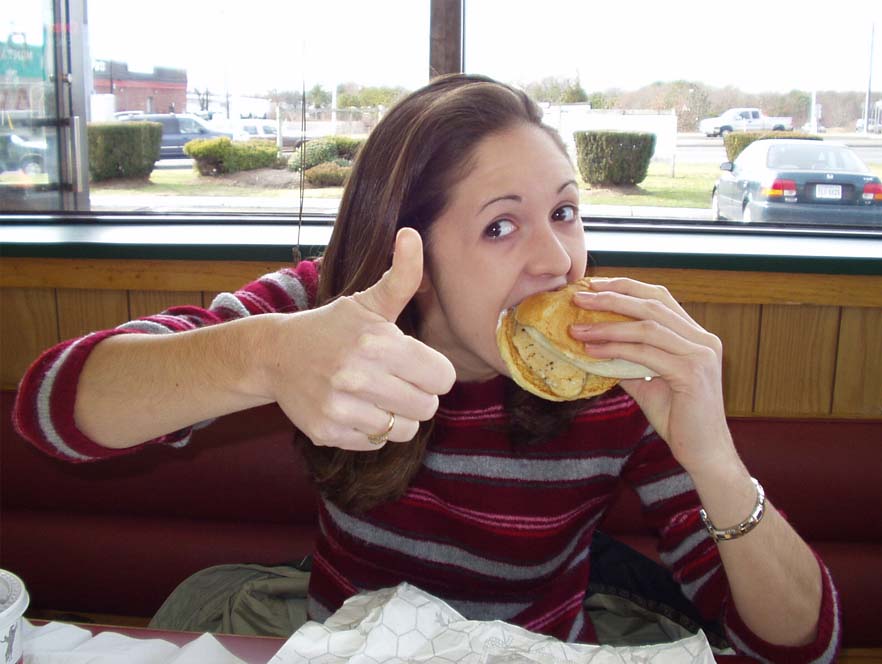
Foreground: my sister, eating a chicken sandwich. Background: my 1998 Honda Civic.
11:30 a.m., Shirley, New York
“Someone is going to ask you what it’s all about
Stick around, nostalgia won’t let you down.”
Of course, my sister finds it hilarious that I want to go to a Roy Rogers with her and take pictures of her eating a chicken sandwich. However, that’s because she’s one of maybe five people in this world who are as odd as I am. For the record, I get a cheeseburger but opted to take it plain because I am craving French fries more than I am craving burger. And I don’t go for the biscuits because being that this is the first fast food burger I’ve eaten since March of 2001, I don’t want to make myself too sick. Besides, I’m just here for the ambiance.
And what ambiance it is. The deep red and tan walls, the western-themed paintings, the garbage can with “Thanks” carved into its swinging door, the serve-yourself soda machine with Fanta root beer, and the fixins bar. Oh, the fixins bar. That’s what always made Roy Rogers so great, right? You could add as many pieces of lettuce, tomato, pickles, and onions as you wanted, as well as ketchup, mayo, mustard, and horseradish. You could very well make the ultimate burger out of something that was probably two steps above the late, lamented Marriott Burger of my alma mater.
Nancy and I finish our food and head for westbound Sunrise Highway so we can stand in line at Best Buy for 10 minutes and run into one of our neighbors on the way through the parking lot. We return to Sayville at around 12:30, and considering we’ve gone shopping on Christmas Eve, that’s not too bad a trip and I can rest happily. Well, at least until I have the desire to go somewhere else.

Pop Culture Affidavit Episode 82: A Universally Different Vacation
 Travel back to this past summer as my family and I talk about our trip to Universal Studios Orlando. First up, you’ll hear Brett tell me all about the Wizarding World of Harry Potter; then, Amanda and I give our impressions of the theme park.
Travel back to this past summer as my family and I talk about our trip to Universal Studios Orlando. First up, you’ll hear Brett tell me all about the Wizarding World of Harry Potter; then, Amanda and I give our impressions of the theme park.
You can listen here:
Pop Culture Affidavit Episode 55: Where Dreams Come True (Summer 2015 Part Two)
 The summer 2015 recap continues with a Walt Disney World episode! Join me, Amanda, and Brett as we head to Orlando in July and cover past and present vacations, what we loved doing, what we loved to eat, and a little bit of Agent P’s World Showcase Adventure!
The summer 2015 recap continues with a Walt Disney World episode! Join me, Amanda, and Brett as we head to Orlando in July and cover past and present vacations, what we loved doing, what we loved to eat, and a little bit of Agent P’s World Showcase Adventure!
Here’s where to listen:
iTunes: Two True Freaks Presents Pop Culture Affidavit
Two True Freaks Presents: Pop Culture Affidavit podcast page
And now for some bonus material!
During the show, I talk about my past experiences at Walt Disney World and also read the section on the now-defunct EPCOT Center ride Horizons found in Walt Disney World: A Pictorial Souvenir, which was published in 1984 and I received either right before or during my first trip to Walt Disney World in 1985. Below are some scans of the book for you all to enjoy.
First, the cover:
The beginning of the section of The Magic Kingdom, featuring a gorgeous evening shot:
Main Street, U.S.A. I particularly like this page because of the perspective in the picture on the lower left. You don’t get that view very often. Plus, I have to admit that the lack of a crowd in the picture on the lower right is amusing:
Two of the pages on Fantasyland. I chose the first because of that gorgeous shot of Cinderella’s Castle with the purple sky behind it. The second, I chose, because it has a picture of the skyway that ran over Fantasyland but closed in 1999 (fun fact: Disneyland had a similar skyway, which took you through the Matterhorn, which sounds awesome):
A quick look at Tomorrowland, which is definitely one of the lands of the magic kingdom that changed the most since I was a kid. I rode the Astro Orbiter for the very first time this year, although I have to admit that part of me wishes I’d ridden it back in the day when it had its classic look:
The opening of the EPCOT Center section of the book, complete with the old EPCOT Center logo. I own two vintage-style T-shirts with the logo:
The two-page spread about the EPCOT Center attraction known as Horizons. This is the section of the book I read on the air. A little more history about Horizons: it opened in 1983 and was part of the “phase II” of EPCOT construction/attractions. It closed in 1994 but was reopened in December 1995 and then closed permanently in 1999. The attraction was completely disassembled and demolished and is now the home of Mission: Space. You can see some of the pieces of the Horizons ride on display in the lobby of Walt Disney: One Man’s Dream theater in Hollywood Studios.
Another defunct ride in EPCOT is the GM-sponsored World of Motion. This was one of the original EPCOT Center Future World rides before it closed in 1996. The building still remains, as it was refurbished for what is now the Chevrolet-sponsored Test Track:
CommuniCore is the original name for what is now known as Innoventions in EPCOT’s Future World. The buildings haven’t changed in structure–they are still two half-circles right behind Spaceship Earth–and there are still restaurants and gift shops. The original exhibits were more thematically linked to the various pavilions in Future World, but the Innoventions ones seem to be more of their own thing. If I may editorialize for a moment, I hope something more interesting is done with Innoventions because while some of the exhibits and interactive games are pretty cool, it seems like there is a lot of wasted space in those buildings:
The page on Canada in the World Showcase. Because Canada is awesome, has one of my favorite gift shops in EPCOT, and there’s a guy playing a tuba:
One of the souvenir guidebook’s pages on the Contemporary Resort hotel. This one was always a personal favorite of mine, as I think it is with a lot of kids, because it’s the one that the monoral drives through.
Here are some pages on Discovery Island, the now-closed zoological park that was part of the Walt Disney World resort until 1999. And if you’re interested in more, here’s a link to a blog post by Shane Perez, who explored the closed facility in 2009: The Photography of Shane Perez — Discovery Island:
River Country was Walt Disney World’s first water park and operated seasonally until November 2001. It was scheduled to reopen in 2002 but that never came to be and the park now sits abandoned:
One of the other resorts that you could stay at in 1984 was the Golf Resort Hotel. The property has since been sold off and from what I can tell is no longer part of the Walt Disney World resort; however, if you’d like a trip down memory lane, the blog Passport to Dreams has an excellent post about it from 2012: Passport to Dreams–Return to the Golf Resort:
Two other areas that have been around since the park’s earliest days in the 1970s are Lake Buena Vista and Walt Disney World Village. I am not sure if Lake Buena Vista still functions as a resort the way it did back in the 1970s and 1980s, but you can still shop at the Walt Disney World Village. Except they don’t call it the Walt Disney World Village anymore–it was renamed Disney Village Marketplace in 1989, Downtown Disney in 1997, and Disney Springs on September 29, 2015:
Finally, a look ahead at what was coming to Walt Disney World in 1986, the new EPCOT Center Future World attraction known as The Living Seas:
Leave Yourself Behind
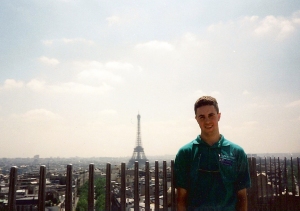 A quick note: This piece originally appeared on an old blog of mine in July 2004. I’ve edited and updated it.
A quick note: This piece originally appeared on an old blog of mine in July 2004. I’ve edited and updated it.
My only regret is that I did not stay longer. I would have loved to experience more, go deeper into some countries and learn more about other cultures. However, being a Student Ambassador has opened my mind even further, as I am forced to think on a global scale about my life, and the lives around me.
That is the final paragraph of the journal I kept during the summer of 1994, after I had spent 23 days touring France, Germany, Switzerland, and Spain as a People to People Student Ambassador. Written on a flight back from Paris after my fellow “ambassadors” and I had exhausted the plane’s supply of coffee and soda and had annoyed all of the other passengers, it’s a statement typical of a 17-year-old. At the time, I thought that the program changed my life. Of course, at 17, it had. Being on the verge of my senior year of high school, I was making earnest statements like that on a regular basis. Still, I cannot discount that those three weeks were a turning point in my adolescence, the result of a program whose educational experience was more well-rounded than intended.
Can You Really Get There From Here?
The mission of People to People International and its Student Ambassador program is: “to bridge cultural and political borders through education and exchange, creating global citizens and making the world a better place for future generations.” I received their brochure in the fall of my junior year, right around the time my guidance counselor was drilling into my head that I was in the most important year of my academic career, perhaps even my life. As a result, I went looking for the type of opportunities that would look good on what eventually became a rejected application to Dartmouth — Anchor Club historian, student journalist, and mock trial lawyer. “Student Ambassador to Europe” was something that college admissions officers were impressed with. Europe was where great art was born; where history took place; and where entire generations of disaffected young Americans fled to find themselves.
I convinced my parents that not only would I make it into the program, I would somehow come up with $1200 of the trip’s cost. Not that I knew how I was going to pull that off — this wasn’t exactly like the time I hoarded my $25/week from JillMatt Cards & Gifts so that I could save enough money to visit my friend Chris in Fort Lauderdale. But after some creative publicity, including a story in The Suffolk County News and a talk with the Kiwanis Club (where I made a never-fulfilled promise to come back and speak to them), I had my tuition. On June 24, I set off for Kennedy airport, where I met up with the rest of the Long Island delegation. We had our flight to Washington, D.C. canceled and were forced to cab it to LaGuardia where, in a move reminiscent of a bad Amazing Race moment, two of our group members were dropped off at the Delta terminal and not the Delta Shuttle terminal.
Don’t Smurf an International Incident
Ultimately, my People to People delegation arrived in Washington intact. The entire group of 28 hailed from Long Island, Connecticut, Virginia, Tennessee, and California, and was lorded over by three advisors — the LaMers of Connecticut and Mary Nolan, who had run the Long Island pre-trip meetings. They were all nearing senior citizenship (if they weren’t there already), and I have to admit that I admire anyone that age who is willing to travel for three weeks with a group of unruly teenagers. They had some help during those first few days while we stayed at George Washington University, where People to People’s representatives laid down all of the rules. Essentially, they wanted to avoid three things: the “ugly American” syndrome, an international incident, and a babysit-the-rich-kids summer camp. I mean, that’s why the Student Ambassador program director stood on the stage in a university lecture hall and told us that we weren’t allowed to drink, smoke, do drugs, have sex, or even form cliques.
I honestly thought that last one was insane. Not that I wanted cliques to form, but it seemed that with 28 teenagers in close quarters, cliquing up was inevitable. In fact, small groups of friends formed on the very first day and would get even more defined as the trip went on. But when up against Papa & Mrs. Smurf (named so for Mr. LaMers’ beard) and Punky (Mary Nolan wore a spiked femullet), we were a single group of 28 students who annoyed everyone on the National Mall, the Metro and in the Crystal Underground. I guess all the things that annoyed me about D.C. when I was living and working there, then, were come-uppance for my acting like an asshat at 17. But anyway, I wrote about our initial camaraderie: “We started as … two groups of people from different states. We left as a group of Americans wearing stupid shirts and name tags.” (more…)
Signs and Stickers
 It sounds ungrateful to say this, but there were many times throughout my youth where I was bored off my ass while on a family vacation. oh sure, we took trips to amusements parks and went to places like Washington, D.C. where there was plenty to do at museums, but I remember that for every ride at Disney World or every arcade
It sounds ungrateful to say this, but there were many times throughout my youth where I was bored off my ass while on a family vacation. oh sure, we took trips to amusements parks and went to places like Washington, D.C. where there was plenty to do at museums, but I remember that for every ride at Disney World or every arcade
game at Weirs Beach, there was an antique shop or glass factory. Plus, there were car rides–long, mind-numbing car rides.
In fact, based on the amount of stuff geared towards keeping kids occupied in the car, I think it’s safe to say that a long, mind-numbing car ride was a rite of passage for much of my generation, possibly sitting in the seat that faced backward in someone’s station wagon. My parents didn’t have a station wagon, so my sister and I were sometimes forced to squeeze into the back seat of my mom’s 1987 Honda Prelude, which as an incredibly cramped fit when you were driving eight hours from Long Island to Williamsburg or to new Hampshire. But we definitely kept ourselves occupied with tapes in our Walkmen, comic books, novels, and travel board games.
These would keep our attention for at least a little while until we got bored enough to stare out the window and count the mile markers or keep an eye out for a Sunoco station because dad was low on gas.
There was one activity that I remember sticking with beyond an hour on I-95 in Connecticut, and that was a folder with stickers titled Road Sign Games. My sister and I first spotted this in a store in Lake Sunapee, New Hampshire during one of our many family outings. Being that it was one of those knick-knack gift shops that seemed to be everywhere in that area of New Hampshire, when we went in, we weren’t allowed to do anything and were instantly bored. Not that we would want to–after all, vases, dishes, scented candles, homemade soaps, and necklaces with runes on them weren’t exactly the type of things that set our world on fire, especially when I would spend most of my vacation each year reading Star Trek novels.
This particular place, though, had toys and games and Road Sign Games was not too expensive, so my parents went ahead and bought one for me and one for my sister. The game was simple, too–contained in a polybag was a folder containing pictures of commonly found road signs along with a sheet of stickers, which you would stick to the matching sign in the folder whenever you saw that particular sign. At a glance, it looks like the type of thing you’d have a little bit of fun with but eventually put away among the sticker books, word searches, and crossword puzzle books that were all bought at one time or another as boredom cures.
But when I was up in New Hampshire that year, completing the book became one of the most important things I had to get done when I was on vacation. My parents would often make us schlep halfway across the state or even into Vermont throughout the vacation and when I realized that I was seeing a number of road signs during these day trips, I knew that I had found my salvation. No longer was I going to spend my time int he back seat fighting with my sister or wondering why there weren’t any good songs on the radio, I had signs to see!
Some of the signs were pretty easy to spot. I didn’t have to go very far to see a stop sign, one way, do not enter, or a speed limit sign; and interstate shield and exit signs would about whenever we traveled long distances. But I had never seen a no passing zone or a pavement ends sign. And so began the quest. on the way to shopping, I noticed that whenever there was a solid yellow line on the side of the road, there would be a yellow triangular no passing zone sign; whenever we hit construction traffic, I saw orange signs; and I noticed how all of the signs around the parks were brown. In fact, I became so determined to finish the road sign game that I walked from our cabin over to Wadleigh State park, where I managed to fill more than a few of that section’;s stickers. I think i got as far as all but ten stickers before the road sign game was filed away and then either lost or thrown in the trash. (more…)
Memories of Concrete and Asphalt
 Back in October, my parents came down from Long island to take my son to Kings Dominion, an amusement park just outside of Richmond. Being that he’s only five years old, he was interested in the animatronic dinosaurs and kiddie rides, one of which was the Peanuts tie-in called “Joe Cool’s Driving School.” He sat in a little car and drove around a mock streetscape that came complete with traffic lights, road signs, and street lamps, one of which looks exactly like the crooked-style street lamp that I remember being attached to jersey barriers on the Wantagh Parkway.
Back in October, my parents came down from Long island to take my son to Kings Dominion, an amusement park just outside of Richmond. Being that he’s only five years old, he was interested in the animatronic dinosaurs and kiddie rides, one of which was the Peanuts tie-in called “Joe Cool’s Driving School.” He sat in a little car and drove around a mock streetscape that came complete with traffic lights, road signs, and street lamps, one of which looks exactly like the crooked-style street lamp that I remember being attached to jersey barriers on the Wantagh Parkway.
In case you are unfamiliar with the Wantagh Parkway or any of the other parkways on Long Island, this is one of a network of roads that shuttles passengers around Long Island, especially to and from New York City. I won’t name and describe all of them, but will say that the two most well-known are the Southern State and Northern State, which run on the south and north shores, respectively, with parkways like the Meadowbrook, Wantagh, and Sagtikos connecting them from north to south. The parkways were designed in the earlier decades of the 20th Century by Robert Moses (who was parks commissioner at the time and has a state park and causeway named after him) and are passenger car-only roadways with stone-façade bridges, and even some hiking and walking trails.
But important to me and my childhood on Long Island, these parkways were the way my family traveled from our house in Sayville to my grandmother’s house in New Hyde Park. She and my grandfather (who passed away when I was in high school) lived in a typical post-war suburban home that they had moved into back in the late 1940s or early 1950s when my grandfather had returned from the Second World War, living in Brooklyn became tougher, and these homes were becoming more readily available. My family drove this route more times than I can count, and it wasn’t until I attended Joe Cool’s Driving School that I realized that every trip to my grandmother’s was a history lesson. I honestly don’t know what prompted it—probably because I have always associated Peanuts with the suburban 1960s of its television specials—and I honestly don’t know why I hadn’t noticed it before. After all, I have always been interested in the modern history of my homeland (although I have only read Robert Caro’s infamous New Yorker article on Robert Moses and not The Power Broker, which I swear I will one day pick up and read) so you think I would have realized that Long Island has an element of “living history” to it.
Then again, you rarely notice these things when you live among them and the history of suburban Long Island is not designated with historical markers the way the Revolutionary and Civil War landmarks are near my current home in Virginia. It’s more geologic, in a sense. When you look at a rock formation or a canyon, you see striations in the rocks and any geologist can tell you how that determines the age as well as what can clue you into that area’s history (for example, the presence of certain elements can suggest that, say, an asteroid hit the Earth at some point). When you look at the suburbs of Long island, you see that their history is layered. Sure, Levitt bulldozed farmland and build houses at one point and Moses did the same for the parkways, but that was more than half a century ago and since then, one thing has been built on top of one another, or the old has been repurposed, perhaps several times over.
Starting my trip in my parents’ house in Sayville is perfect for this sort of examination. My hometown is a good 200 years old and while it has had its fair share of changes over the years (read: something was knocked down in order to put up another bank), there are still vestiges of its former life as a seaside gateway for the turn-of-the-century upper class as well as century-old main street buildings that are more suited to its life a s pre-suburban small town, as are the towns of West Sayville and Oakdale, which we would snake through on our way to the three parkways that would eventually take us to New Hyde Park.
Each seems to have its own personality. The Southern State, which when I was a little kid still had a few timber post street lamps lining its shoulders, has the feel of what I can imagine was truly considered a “parkway”—a sprawling, twisting, turning road with stone-façade bridges that reminds you that you are, in fact, driving along the south shore. Even when it becomes the Belt Parkway (the bane of any New York-area traveler), you still feel like you are on a coastal highway. Contrast that with the Northern State, witch seems to choke its way along the north shore before it becomes the Grand Central Parkway and heads straight for Fitzgerald’s Valley of Ashes, and you have a look at various shades of the past. On approach to New Hyde Park via the Northern State, there are the North Shore Towers, which is a high rise luxury condo but always seemed like a reminder that we were near New York City.
But not the New York City of the time; a New York City of another era, or the type of city I remembered from years of educational films. And the Wantagh provided the transition between the more open, even rural Suffolk County and the increasingly urban Nassau County. Whereas the Southern and Northern States both saw their looks change from years past—lanes were expanded and timber post lights were modernized—for years, the Wantagh still had the same crooked lamp post that were installed in the 1970s and it skirted by towns that at a glance looked like they hadn’t changed in years. It’s not an extraordinary stretch of road by any means and we were only on the parkway for a few miles, but between those towns and those lights, I always felt as if I were going back in time. (more…)
Pedro’s fireworks! Does yours?

South of the Border. Photo by mollypop via cc license on Flickr.
I don’t know if I can consider myself a “well-seasoned” traveler, at least compared to my Facebook friends who always seem to be jetting to some exotic locale and posting pictures of themselves in a bar or on a beach that’s thousands of miles away from my kitchen table. I’ve only been out of the country a few times myself, and my travels throughout the United States haven’t been too extensive. So why do I think that I’m a halfway decently traveled person Well, because I have done quite a bit of traveling in my day and that “travel” has meant driving up and down Interstate 95.
This past weekend, my wife and I drove from our home in Charlottesville to Savannah, Georgia. She was graduating with her MBA from Georgia Southern University, and while some of our trip involved what I guess William Least Heat-Moon would have termed “Blue Highways,” most of it was downt he main road of the east coast, a road that is not prestigious enough to be called a “mother” road; in fact, I’m sure “motherfucker of a road” would be more appropriate.
Anyway, with this particular trip, I have more or less traversed I-95 all the way from the interchange with I-91 in Connecticut to right around the South Carolina/Georgia border. This particular trip was my first time through the Carolinas by car and I have to say that I-95 surprised me. To me, I-95 is a motherfucker. It’s a sprawling beast of a mega-highway that spans as many as eight lanes across and is often riddled with traffic jams and construction zones. I-95 is the world’s biggest parking lot in Northern Virginia and it is the definition of time suck in Maryland. A trip up to my parents’ house on Long Island can sometimes be an epic schlep if not timed correctly, and I have beamed with pride whenever I have been able to take a minimum amount of time getting there.
But the Carolinas were just so … desolate. We entered North Carolina around 9:00 a.m. and by then the highway had shrunken from what you’d expect from an interstate to a four-lane highway with two lanes on each side that looked like they hadn’t been maintained since I was a toddler (though, funny enough, the signs had been updated because the font used was obviously Calibri and not Helvetica). Further adding to the oddity was the copious amount of billboards for adult shops and gentlemen’s clubs. For a region so devoted to conservative politics, they sure advertised a lot of skin.
I had heard of South of the Border years ago, through friends of mine who had driven to places like Disney World (a trip from Long Island that is a solid two days’ worth of driving). They way they put it, South of the border was some sort of monumental destination. Their usual description was, “You start seeing signs for it, like 100 miles before you get there. Then there is another sign, and another one, and another one. And then, it’s just huge and everyone stops there.” It had been built up in my mind to be a sort of Vegas in the Carolinas. (more…)








